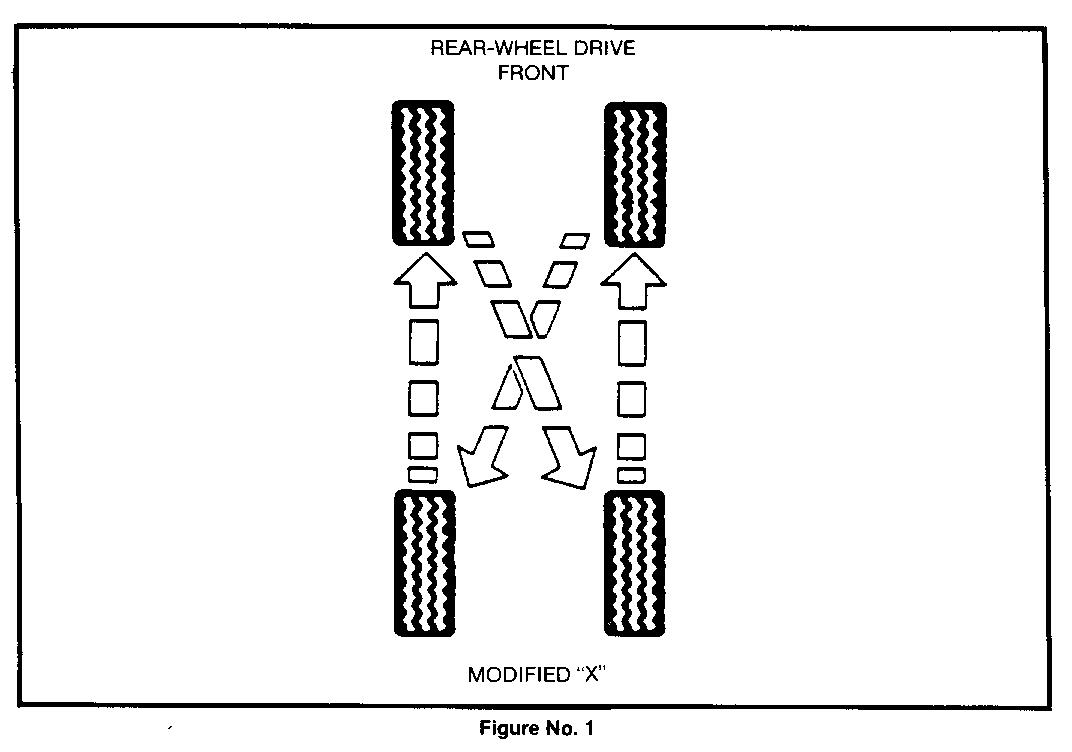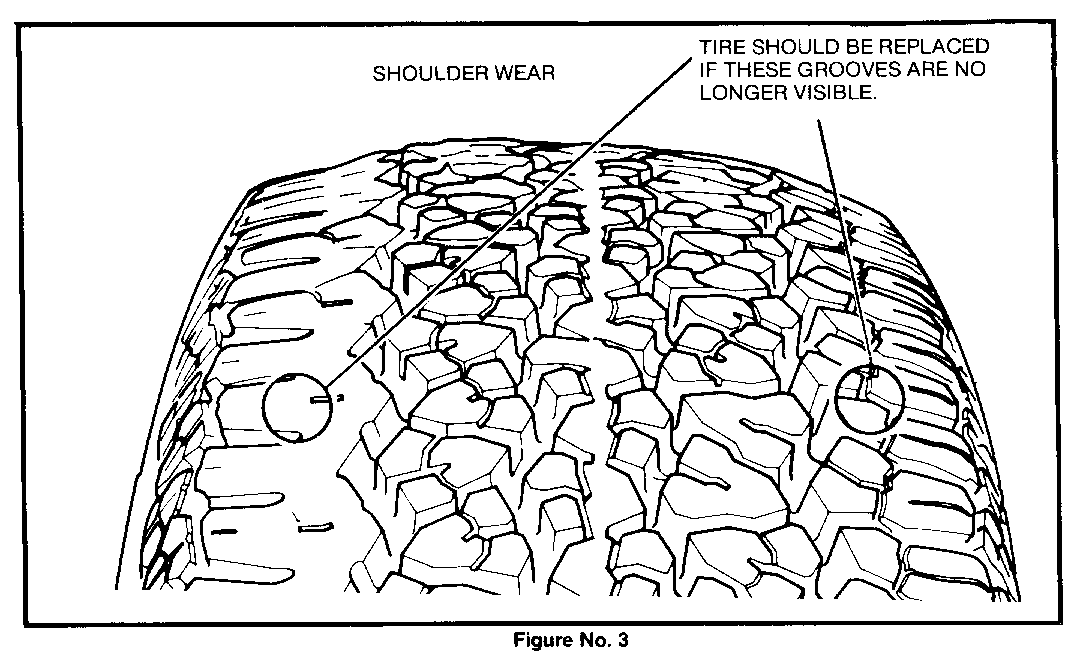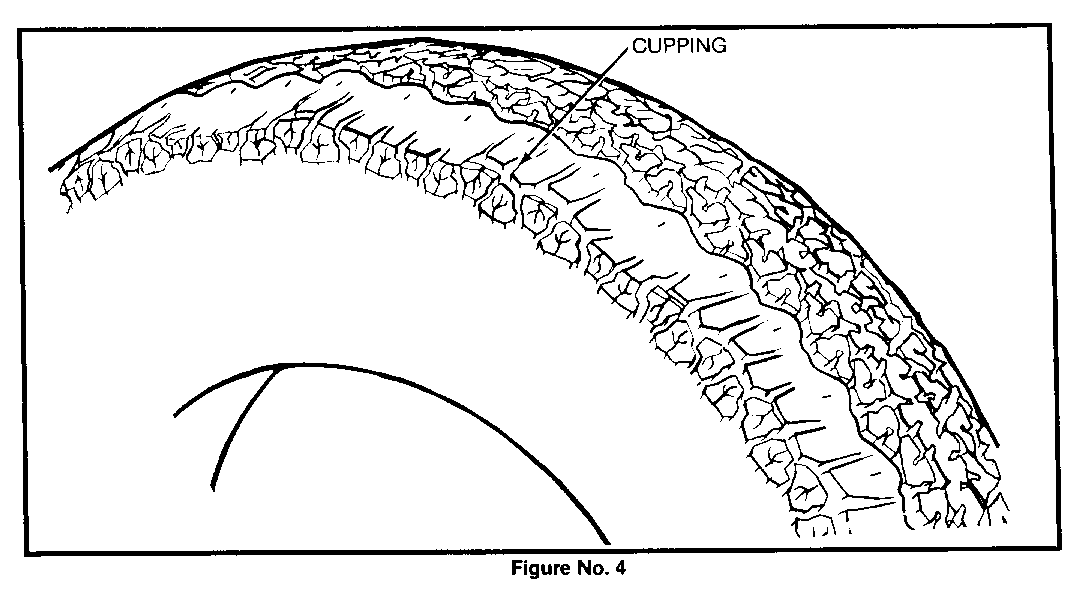TIRE WARRANTIES IRREGULAR/PREMATURE WEAR

MODELS AFFECTED: ALL MODELS
This bulletin supersedes Serviceman Bulletin T-86-49A, Group 3E, which should be destroyed.
The GM Warranty and Owner Assistance Booklet now states that the GM dealer will assist the customer in obtaining a tire adjustment, if necessary. To eliminate possible confusion concerning tire adjustment handling, the following guidelines should be used:
TIRE CONDITIONS WARRANTED BY TIRE MANUFACTURERS
As in the past, tires continue to be warranted by the tire manufacturer against defects in material or workmanship. Some tires now have extended warranty periods and/or road hazard coverage. Details of the limited warranty may be found in each tire company warranty booklet, which is part of the glove box material.
TIRE CONDITIONS WARRANTED BY CADILLAC
Tire conditions caused by vehicle defects are warranted by General Motors. This statement is now included in the GM Warranty and Owner Assistance Booklet. This applies during the basic coverage period, which is 12 months/12,000 miles, and should be applied to all past and current models.
Examples of tire conditions that fall within GM's responsibility may include tire damage during vehicle assembly, transportation claims, tire damage due to tire-to-vehicle interference, and irregular/premature tire wear. Tire wear due to abusive driving is not covered by warranty.
IDENTIFYING AND CORRECTING IRREGULAR/PREMATURE TIRE WEAR -------------------------------------------------------- Irregular tire wear usually occurs on non-drive axles, such as the front wheel positions of rear drive vehicles. All early indication may be an increase in tire noise. In most cases, modified "X" tire rotation, which is a scheduled maintenance at 6000 miles, will equalize tire wear (Figure 1). Some amount of wear is expected and should be considered normal. Only when the cross grooves in the tread disappear within 12,000 miles should the tires be replaced under warranty (Figure 2). Even when these grooves disappear, however, the tire is normally only half worn in this area.
Irregular/premature tire wear is aggravated by excessive toe-in (or toe-out). Excessive camber can also be a contributor, as can operating conditions such as city driving with a lot of cornering. Whenever tires are replaced for this reason, alignment should be checked and reset to specification, if necessary.
OBTAINING REPLACEMENT TIRES
If tires are needed for any of the above conditions, they should be purchased from your local tire outlet. If tires are not available, each tire manufacturer has a toll-free assistance line for dealers. These toll-free numbers have previously been provided in Dealer Service Information Bulletin 87-I-43.
WARRANTY CLAIM INFORMATION
Labor Code E0420 should be used for tire replacement. The tire invoice amount should be entered as a net item on the warranty claim. Use 0.4 hour for each tire replaced. DO NOT USE THE LABOR CODES PUBLISHED IN SERVICEMAN BULLETIN T-86-49A.
TIRE ROTATION IS A SCHEDULED MAINTENANCE ITEM ON ALL CADILLAC MODELS AT 6000 MILES (10,000 KM) AND THEN EVERY 15,000 MILES (25,000 KM)
This rotation pattern eventually gets each tire on all four positions. It gets those tires on the non-drive axle, which are most prone to irregular wear, to turn in the opposite direction. This will equalize wear quickest, and tire noise related to tread wear will actually become quieter after a few thousand miles.




General Motors bulletins are intended for use by professional technicians, not a "do-it-yourselfer". They are written to inform those technicians of conditions that may occur on some vehicles, or to provide information that could assist in the proper service of a vehicle. Properly trained technicians have the equipment, tools, safety instructions and know-how to do a job properly and safely. If a condition is described, do not assume that the bulletin applies to your vehicle, or that your vehicle will have that condition. See a General Motors dealer servicing your brand of General Motors vehicle for information on whether your vehicle may benefit from the information.
